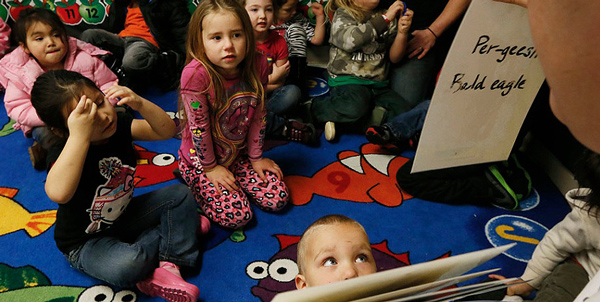Marc Martin and Lee Romney of the Los Angeles Times

EUREKA, Calif. — Carole Lewis throws herself into her work as if something big was at stake.
“Pa’-ah,” she tells her Eureka High School class, gesturing at a bottle of water. She whips around and doodles a crooked little fish on the blackboard, hinting at the dip she’s prepared with “ney-puy” — salmon, key to the diet of California’s largest Native American tribe.
For thousands of years before Western settlers arrived, the Yurok thrived in dozens of villages along the Klamath River. By the 1990s, however, academics had predicted their language soon would be extinct. As elders passed away, the number of native speakers dropped to six.
But tribal leaders would not let the language die.
Last fall, Eureka High became the fifth and largest school in Northern California to launch a Yurok-language program, marking the latest victory in a Native language revitalization program widely lauded as the most successful in the state.
At last count, there were more than 300 basic Yurok speakers, 60 with intermediate skills, 37 who are advanced and 17 who are considered conversationally fluent.
If all goes as planned, Lewis' 20 students will move on to a second year of study, satisfying the world language requirement for admission to University of California and Cal State schools.
But the teacher and tribe have some longer-term goals: boosting Native American high school graduation rates and college admissions numbers; deepening the Yurok youths' bonds to their culture; and ensuring that their language will regain prominence after half a century of virtual silence.
The decimation of the language dates to the first half of the 20th century, when tens of thousands of Native American youngsters across the country, Lewis' mom among them, were sent to government-run boarding schools. The effort to assimilate the youth into Euro-American culture pressed them to abandon their own. Often they were beaten for speaking in their native tongues.
»»» Read the complete article and enjoy a video & slideshow on
The Frameworks Page of the Los Angeles Times